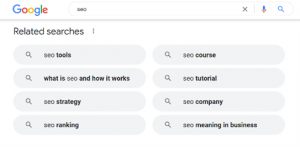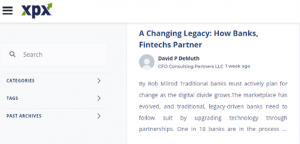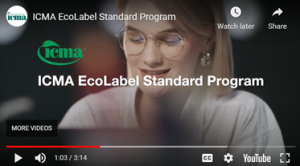Search engine optimization (SEO) moves your brand forward.
If you plan to build your brand in 2022 with a digital marketing solution, SEO must serve as the foundation for the entire campaign. It should be your No. 1 thought—not an afterthought—because It is a highly cost-effective tactic that gets results.
Let’s look at the research: a search engine, such as Google, Yahoo or Bing, is the first step in the majority (68%) of online experiences, so it shouldn’t be a surprise that organic search accounts for more than half (53.3%) of all website traffic.
Most marketers agree that inbound marketing tactics (i.e. SEO, blog content) create the highest quality source leads with a 14.6% close rate.
Your SEO strategy should be clear: Move your brand on the first page of search engine results. Why? Because you will be rewarded with a 32% average click-through rate for being on Page One. In total, 75% of people never click past the first page of search engine results because everyone wants whatever they want now.
At CMA, we devise a thorough SEO strategy for every digital marketing campaign that addresses three critical components of our award-winning program.
But first, let’s get the basics out of the way.
SEO is a process in which a website engages digital elements on and off page to increase search engine results pages (SERPs) for targeted keywords that are associated with a specific brand. For better search rankings, we break down the program into three areas:
- On-page SEO utilizes elements found on the website’s pages to help increase rankings. These elements include keyword-based web content, blogs and case studies with internal backlinks within pages.
- Off-page SEO utilizes digital tactics externally for the brand. Off-page SEO resources help build validity for the brand’s digital presence. This can be through external backlinks, social media and business directory listings.
- Technical SEO aligns the brand’s website elements for Google’s algorithms for indexing thus increasing SERPs for targeted keywords. Technical elements of SEO can include title/meta tags and descriptions.
On-Page SEO
On-page SEO helps search engines understand your brand. Specifically, it helps search engines determine if your website’s content is relevant to queries from people searching for answers.
In other words, there is value in making the content on your pages easy to understand—not only for your target audiences but also for the online bots that crawl your webpages around the clock. Keep in mind, the top result on the first search page receives 32% of the keyword traffic and the first page of search results generates as much as 91.5% of traffic.
Content plays a major role in on-page SEO. Here are several ways to leverage content in a way that will boost your SEO results:
SEO Strategy Tip #1: Internal Linking
The World Wide Web loves “webs,” which is what you get when you start linking to other internal assets on your website. To take it to the next level, leverage your analytics to figure out which webpages have the highest authority and link them to your lower authority webpages. This tactic will help push up the authority of those pages, which will push up the search engine ranking of your entire site.
Within six months, our SEO campaign put Paramont EO, an electrical distributor in Chicago, Illinois, on Page One in its target markets. The family-owned company’s homepage, services page and blog page have bumped up to the first page of search results in Illinois. From a content perspective, four CMA-created blogs have also reached the first page in the state.
SEO Strategy Tip #2: Original Photos, Graphics
Stock photos have been hurting your SEO results. Whenever possible, you should use original photos and graphics that are unique to your website. Search engines really value uniqueness.
Based on research, sites with unique images outranked sites that used stock photos. With a little more planning and preparation, you can improve your content by making it special for your target audiences.
We advised Vein Specialist Centers (VSC) to use original images, in addition to other tactics, when they needed SEO help to promote their 12 locations in New Jersey and New York. VSC is a physician-led practice that specializes in minimally invasive therapies that produce pain-free, immediate, life-changing outcomes for active patients who suffer from disorders that include spider veins, varicose veins, restless leg syndrome, deep thrombosis and pelvic venous congestion.
During a 12-month campaign, CMA launched SEO and Google ad campaigns that increased patient appointments for the physician-owned medical practice in an extremely competitive region.
- Generated 882,000 impressions (76,000/month).
- Drove 43% of total traffic with Google ads.
- Delivered 5%-6% click-through rate with Google ads.
- Increased patient appointments by 29.37% with a Google ad campaign.
- Increased patient appointments by 112% with SEO
SEO Strategy Tip #3: Latent Semantic Indexing Keywords
You should always make it easier for your target audience and the webcrawlers to quickly figure out what your website and brand is focused on. Latent semantic indexing (LSI) keywords go a long way to address that issue. They are keywords that are closely related to your main keywords, providing deeper relevancy so all parties understand if your content is the answer to their problem.
For instance, if I were to write about SEO, then “SEO” would be one of my keywords. Other secondary, closely related, LSI keywords would be “SEO strategy”, “SEO ranking”, “SEO company” and “SEO tools” to name a few. You should sprinkle keywords throughout your story—but don’t stuff them in. (Those days are behind us.)
 So, how do I know what some closely related LSI keywords are? First, type in your main keyword “SEO” in the Google search box, then scroll down the page until you reach the “Related Searches” box. That’s where you can quickly find some LSI keywords.
So, how do I know what some closely related LSI keywords are? First, type in your main keyword “SEO” in the Google search box, then scroll down the page until you reach the “Related Searches” box. That’s where you can quickly find some LSI keywords.
For Leading Edge Coaching & Consulting (LECC), we drove on-page successes with original content, as well as short-tail and long-tail keywords that included LSI keywords to provide additional context.
In one month, our SEO campaign coupled with display ads drove 988 marketing leads to LECC’s “Contact” page. Overall traffic increased 249% and the bounce rate lowered to 3.75%.
Off-Page SEO
While it’s smart to begin with building your on-page experience, off-page SEO should not be neglected. It’s what builds your website’s authority, which plays a large role in where your brand is ranked in search results—and how much traffic you receive.
Off-page SEO is about the things that happen off your website’s pages, such as links, backlinks and mentions. If you look at the brand with the No. 1 position on the first page of Google search results, that company, on average, has 3.8x more backlinks than the companies that show up in positions No. 2 through No. 10.
So if your website doesn’t have enough authority right now, it’s not a problem. Just start an off-page SEO campaign that will allow your website to glean more credibility from other high-ranking sites.
Here are a few tips on how to jumpstart your off-page SEO campaign:
SEO Strategy Tip #4: Long-Form Content
Long-form content helps move your website higher in the rankings because it tends to attract more backlinks and traffic.
Take a look at an article I wrote about digital marketing channels. It’s 1,961 words with plenty of keywords, as well as external and internal links.
 The blog post ranks high for “Digital Marketing Channels” and contributes to 20% of CMA’s website traffic and nearly 10,000 pageviews.
The blog post ranks high for “Digital Marketing Channels” and contributes to 20% of CMA’s website traffic and nearly 10,000 pageviews.
With long-form content, you can also create an opportunity to add more keywords, links and H2 tags (i.e. subheads) that also contribute to more “relevancy” searches, which translates into more traffic.
SEO Strategy Tip #5: Expertise, Authority, Trust
Search engines love to promote quality content. But what does that mean? What does “quality” look like in terms of web content?
At CMA, we offer a “Thought Leadership” service that combines blog writing with media relations to support on-page SEO and off-page SEO.
For example, we begin the process by positioning our clients as helpful experts who share their expertise with their target audiences. The content can take the shape of a blog post, press release or a special guide, which we publish on their website.
But, before we put the original content on their site, we shop it around to third-party news sites, which have sites with higher-ranking authority. Once we grant the right for first publication to a news site and it’s published, then

we place the article on our client’s site with an editor’s note—“This story was originally published on New Jersey Business.”—so we don’t confuse the search engines about who originated the content. In the end, we create one link from our client’s site to a website with more authority in their sector AND we receive a backlink and mention from the same site.
At CFO Consulting Partners, a financial accounting-advocacy firm with offices in Princeton, New Jersey and New York City, we delivered the Thought Leadership service with great success. Within months, we produced several links to trade publications in their field.
SEO Strategy Tip #6: Press Release Distribution
When it comes to content formats, the press release demands respect. It is a vehicle that contains much more than information, which you can find in blogs and guides. A press release is a formal announcement of news, which search engines love because news items are unique.
 Throughout the year, your organization should plan several press releases as part of its content strategy. Diverse content and formats will make things more interesting to your target audiences. Over time, your brand will be rewarded.
Throughout the year, your organization should plan several press releases as part of its content strategy. Diverse content and formats will make things more interesting to your target audiences. Over time, your brand will be rewarded.
For Amerlux, a lighting manufacturer in Oakland, New Jersey, we built a media relations campaign to generate more sales leads for its interior and exterior products. CMA developed a yearlong media relations initiative, which leveraged earned, owned, shared and paid media, to drive marketing qualified leads to Amerlux.com. The campaign encompassed press releases and “thought leadership” feature article placements, as well as blogs, social posts and LinkedIn ads. Topline results included securing 2,901 media placements, 12,234 engagements on social and more than 3,400 referral clicks from organic and paid media.
Other activities that benefitted SEO results included:
- Generated 20,218 page views for the blogs.
- Compelled Amerlux visitors to engage more with blogs, decreasing bounce rate to 5.66%.
- Drove 5,273 targeted individuals with the blogs to the client’s website.
- Produced 1,430 referral clicks from the company’s social channels to Amerlux’s website.
- Created LinkedIn ads that drove 470,760 impressions and 1,985 clicks to the Amerlux webinar series.
Technical SEO
Technical SEO is about meeting the technical requirements of search engines to improve a website’s organic search. This part of SEO can be broken down into site structure, indexing, crawling and rendering. Important subtopics that relate directly to customer experience include page speed and responsive design, which adjusts webpages to fit any user device, whether it be a laptop, cellphone or tablet.
Here are several tips to ensure your technical SEO is being maximized to its fullest potential:
SEO Strategy Tip #7: Fix Broken Internal Links
Fixing broken internal links helps search engines like Google properly index a website. These fixes will allow your website to rank better for technical SEO than your competitors. (This tip requires continuous monitoring.)
 We helped the International Card Manufacturers Association (ICMA) rework several web pages to improve navigation, optimization and visibility of ICMA’s revenue-generating programs. The project involved fixing broken internal links. Since the updates, these pages have consistently placed in the top five viewed pages on the website on a weekly basis. We also developed and embedded a video to the ICMA EcoLabel Standard Program to further enhance SEO. Created in response to consumer and card issuer demand for more eco-friendly transaction and identification cards, the EcoLabel Standard Program recognizes ICMA member card manufacturers for their commitment to sustainability and for specific card products that meet program requirements. The voluntary program establishes third-party certification of card manufacturers’ assertions that a product is an environmentally preferable alternative.
We helped the International Card Manufacturers Association (ICMA) rework several web pages to improve navigation, optimization and visibility of ICMA’s revenue-generating programs. The project involved fixing broken internal links. Since the updates, these pages have consistently placed in the top five viewed pages on the website on a weekly basis. We also developed and embedded a video to the ICMA EcoLabel Standard Program to further enhance SEO. Created in response to consumer and card issuer demand for more eco-friendly transaction and identification cards, the EcoLabel Standard Program recognizes ICMA member card manufacturers for their commitment to sustainability and for specific card products that meet program requirements. The voluntary program establishes third-party certification of card manufacturers’ assertions that a product is an environmentally preferable alternative.
Several upgraded web pages include:
- https://icma.com/ace-commercial-training/
- https://icma.com/ace-accreditation/
- https://icma.com/ecolabel-standard-program/
SEO Strategy Tip #8: Set Up Schema
Schema markup is code that tells search engines what content on your site means. By itself, it won’t help your site rank higher, but it will turn part of your site’s content into rich snippets that will be prominently displayed in search results. And that alone is worth its weight in gold—and a lot more traffic.
When Federally Employed Women, a trade group, asked us for digital marketing help, we devised a multifaceted program that included setting up schema coding on their new website. The association’s organic search increased by 7.4% or 388 users in one quarter after the program was implemented.
Recruiting new members is one of FEW’s organizational objectives. The organization helps more than one million women in the military and civilian workforce become strategic leaders with its four-pillar program: training, legislation, diversity and compliance. Since 1968, the nonprofit has advocated for equity and diversity for women. FEW works toward advancing women in government with cutting-edge training, nationwide networking and invaluable insight.
SEO Strategy Tip #9: Update Robots.TXT File
In effect, a robots.txt file communicates with engine crawlers, notifying them about which URLs they can access on your site. Leveraging this type of file helps your site maintain page speed because it prevents a deluge of requests to your site from bots. It is important to update your robots.txt file when you add pages, files and directories that you want to be indexed by search engines.
 When the Village Development Group asked us to help promote their Maryland properties, we employed a content and SEO campaign. We developed blogs that provided resources to the company’s existing tenants and highlighted regional attractions to showcase the value of the property’s location to prospective tenants. We also made sure to update the robots.txt file each time we added content.
When the Village Development Group asked us to help promote their Maryland properties, we employed a content and SEO campaign. We developed blogs that provided resources to the company’s existing tenants and highlighted regional attractions to showcase the value of the property’s location to prospective tenants. We also made sure to update the robots.txt file each time we added content.
In a 12-month period, our campaign increased organic search by nearly 36% or more than 3,300 users.
Like your organization’s website, SEO should play a central role in any digital marketing campaign to boost the value of your investment. The behind-the-scenes tactic puts your assets in front of more prospects and clients 24/7, which is where you need to be to build your brand. If you’re looking to add an SEO strategy to your marketing efforts, contact us today.